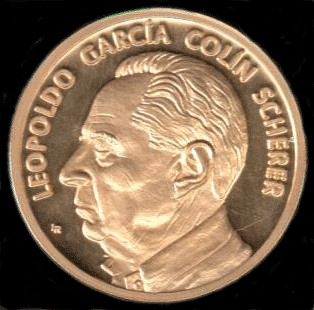Description
*sven.reichenberger@uni-due.de
The availability of laser-generated nanomaterials with gradually tuned intrinsic application-relevant properties (e.g. nanoparticle size, loading, alloy composition) and high purity allowed to systematically study and tailor materials for heterogenous catalysis, additive manufacturing and biotechnology in the recent decade. The scalable, surfactant-free laser-based synthesis route has shown to complement conventional preparation methods of nanomaterials, enabling independent studies in terms of nanoparticle purity, functional properties (size, morphology, oxidation state) and material design (multi-elemental composition) as summarized in Fig. 1.[1,2] Furthermore, preadjusted nanoparticle properties are maintained due to subsequent nano integration onto support materials without any calcination or activation being required (since no surfactants were used in the first place), therefore allowing mechanistic studies while avoiding cross-correlations (e.g. introduced by calcination or changing particle size).[3]
The presented talk intends to cover the fundamentals of surfactant-free laser-based synthesis hierarchically addressing the role of plasma dynamics, cavitation bubble dynamics and the role of persistent micro bubbles as well as laser properties in this context on the nanoparticle productivity and yielded particle size.[4] The previous will be discussed in terms of noble metal, alloy (here mainly Au, Pd, Pt and related alloys) and oxide nanoparticles.[1] Recent advances in scale-up allowing the g/h-synthesis and posttreatment of nanoparticles, as well as continuous preparation of catalysts up to several 10th of kg per 40h week, will be demonstrated.[5] Finally, newest advances in pulsed laser post-processing and related laser-based defect-engineering of semiconductor and spinel materials, its feasibility and perspectives in fundamental catalytic studies will be discussed.[6]
Acknowledgments:
The author gratefully acknowledges funding by the Deutsche Forschungsgemeinschaft (DFG, German Research Foundation) – Projektnummer 388390466 – TRR 247
References
[1] S. Reichenberger, G. Marzun, M. Muhler, S. Barcikowski, ChemCatChem. 2019, 11 (18), 4489 [2] D. Zhang, B. Gökce, S. Barcikowski, Chemical Reviews 2017, 117, 3990.
[3] a) G. Marzun, A. Levish, V. Mackert, T. Kallio, S. Barcikowski, P. Wagener, J. Coll. Int. Sc. 2017, 489, 57. // b) Dong, W. ; Reichenberger, S. ; Chu, S. ; Weide, P. ; Ruland, H. ; Barcikowski, S. ; Wagener, P. ; Muhler, M. Journal of Catalysis 330 (2015), S. 497-506
[4] a) C. Y. Shih, R. Streubel, J. Heberle, A. Letzel, M. V. Shugaev, C. Wu, M. Schmidt, B. Gökce, S. Barcikowski, L. V. Zhigilei, Nanoscale (2018), 10, 6900–6910. // b) S. Reich, A. Letzel, A. Menzel, N. Kretzschmar, B. Gökce, S. Barcikowski, A. Plech, Nanoscale (2019), 11, 6962–6969. // M. R. Kalus, V. Reimer, S. Barcikowski, B. Gökce, Appl. Surf. Sci. (2019), 465, 1096–1102.
[5] a) R. Streubel, S. Barcikowski, B. Gökce, Optics Letters 2016, 41, 1486. // b) S. Kohsakowski, F. Seiser, J.-P. Wiederrecht,
S. Reichenberger, T. Vinnay, S. Barcikowski, G. Marzun, Nanotechnology, 2019, recently accepted with title “Effective size separation of laser-generated, surfactant-free nanoparticles by continuous centrifugation”
[6] a) M. Lau, S. Reichenberger, I. Haxhiaj, S. Barcikowski, A. M. Müller, ACS Appl Energy Mater. 2018, 1, 5366–5385 // b) F. Waag, B. Gokce, C. Kalapu, G. Bendt, S. Salamon, J. Landers, U. Hagemann, M. Heidelmann, S. Schulz, H. Wende, N. Hartmann, M. Behrens, S.
Barcikowski, Sci. Rep. 2017, 7, 13161

